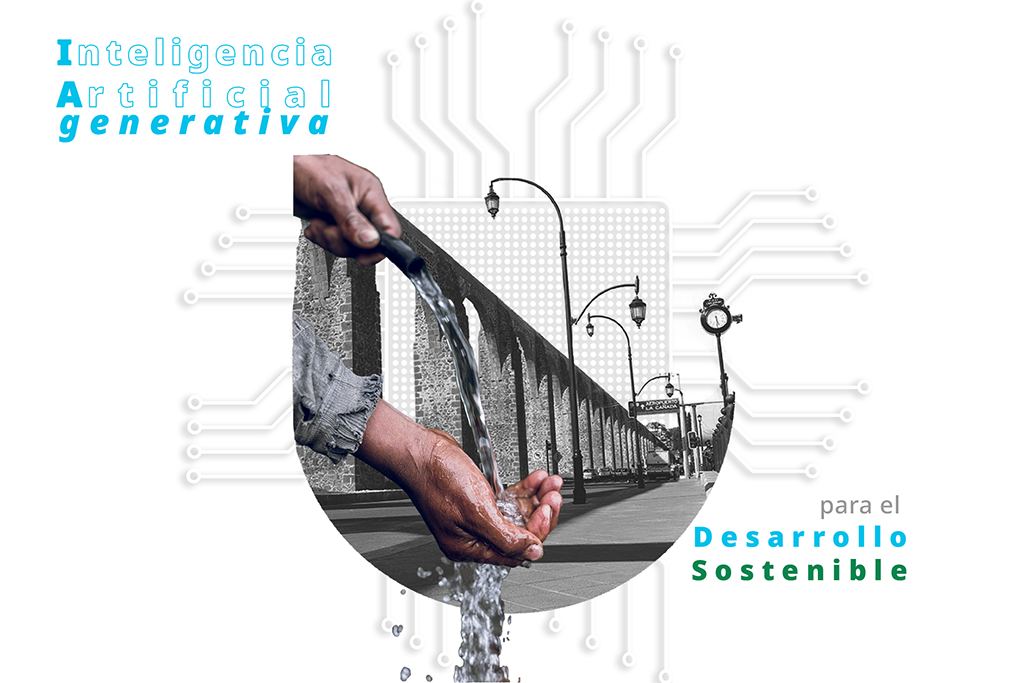Disclaimer:
Please be aware that the content herein has not been peer reviewed. It consists of personal reflections, insights, and learnings of the contributor(s). It may not be exhaustive, nor does it aim to be authoritative knowledge.
Learnings on your challenge
What are the top key insights you generated about your learning challenge during this Action Learning Plan? (Please list a maximum of 5 key insights)
In the initial stages of our learning cycle, we set out to understand how the feasibility analysis for awarding new connections to the water system in the state of Queretaro is conducted. We analyzed this process to understand the opportunities for turning it into a planning exercise for ensuring water access in the state. We identified insights in various dimensions, detailed below.
Insights related to the technical analysis of feasibility studies:
1) COMPLEXITY IN ESTIMATING WATER AVAILABILITY IN THE STATE: Public officials find it difficult to accurately assess the availability of water sources supplying the state and to compare this data with consumption levels. Some causes for this issue include lack of integration of data from different sources, insufficient or unavailable measurements, fragmentation of information, outdated data.
2) UNCERTAIN ESTIMATION OF THE DEMAND FOR NEW WATER SERVICES: Public officials find it challenging to accurately estimate the growth in demand for water services required to support new connections to the water network (feasibility studies) anticipated in the coming years across the state. Some causes for this issue include lack of adequate technological tools, insufficient collaboration between departments and institutions, limited analysis capacity and time to perform it, outdated information.
Insights related to the integral planning of water resources:
3) DIFFICULTY IN ANTICIPATING AND RESPONDING TO EXTREME CLIMATE EVENTS: Public officials face challenges in designing and evaluating multiple scenarios in which water access and management are affected by extreme climate events, making it difficult to make present decisions that ensure a long-term water supply. Some causes for this issue include lack of advanced analytical tools, decentralized data, internal areas and institutions working in silos.
4) FRAGMENTED WORK AMONG INSTITUTIONS: Public officials face challenges in collaboration and communication with other agencies, especially when it comes to share information. Some causes for this issue include: lack of clear mechanisms for sharing information between agencies.
Insights related to the inner workings of the Water Commission:
5) INFORMATION SILOS INSIDE THE WATER COMMISSION: Public officials struggle to access the information necessary to efficiently carry out internal processes. Possible causes include the perception among some officials that certain colleagues consider the information they handle as "theirs," leading to a lack of sharing with other departments and resulting in incomplete records. Additionally, there is an absence of standardized mechanisms for departments to share information and create unified case files for feasibility processes.
Considering the outcomes of this learning challenge, which of the following best describe the handover process? (Please select all that apply)
Other
Can you provide more detail on your handover process?
Since the beginning of this learning cycle, we have partnered with the Government of the State of Querétaro to develop a generative AI (genAI) solution that addresses the needs of its State Water Commission. The state’s Ministry of Finance is also a counterpart in this learning cycle, as they oversee the digital strategy as well as the development and deployment of technological solutions. We hope that involving these key actors from the start of the learning cycle will enhance the likelihood of adoption once we develop and pilot the solution next year.
Please paste any link(s) to blog(s) or publication(s) that articulate the learnings on your frontier challenge.
Data and Methods
Relating to your types of data, why did you chose these? What gaps in available data were these addressing?
We chose qualitative data and rapid ethnography to understand the barriers and motivators of the various actors involved in the feasibility process, including public officials from different areas of the State Water Commission and real estate developers applying for water feasibilities. Additionally, we conducted a literature review and analyzed grey documents to approach our challenge from a systemic perspective, exploring topics such as the state of water resources in Querétaro, trends, existing solutions, laws, and citizens' perceptions. This data also helped us identify the potential functions a generative AI-based solution could perform. We categorized these functions into those suitable for generative AI and those best carried out by humans, specifically the public officials of the State Water Commission.
Why was it necessary to apply the above innovation method on your frontier challenge? How did these help you to unpack the system?
Visual thinking and mapping, along with systems thinking, enabled us to understand where the feasibility process fits within the broader system and the various dimensions influencing the sustainable management of water resources (e.g., regulations, processes, users). Ethnography allowed us to identify the barriers and motivators faced by the actors involved in the feasibility analysis (public officials, real estate developers) and map the inner workings of this process.
Micro-narratives provided insights into how the issue of water resources is discussed in the media and the perceptions of various stakeholders regarding this topic (e.g., citizens, government officials, NGOs). Finally, hackathons leveraged the creativity and expertise of university students from diverse disciplines (e.g., data science, design, engineering, communication) to generate multiple ideas for solutions that use technology to support the sustainable management of water resources.
Partners
Please indicate what partners you have actually worked with for this learning challenge.
Please state the name of the partner:
Ministry of Finance of Querétaro (Secretaría de Finanzas de Querétaro)
What sector does your partner belong to?
Government (&related)
Please provide a brief description of the partnership.
The Ministry oversees the state's digital strategy and served as our entry point in Querétaro for this learning cycle, connecting us with the State Water Commission. They act as a bridge to other state initiatives, strengthening our collaboration for this learning cycle. For example, they centered their annual Digital Hackathon on technological solutions for water sustainability, aiming to identify ideas for building a portfolio of tech solutions. Additionally, they help coordinate our work with other government actors in the state.
Is this a new and unusual partner for UNDP?
Yes
Please indicate what partners you have actually worked with for this learning challenge.
Please state the name of the partner:
State Water Commission of Queretaro (Comisión Estatal de Aguas de Querétaro)
What sector does your partner belong to?
Government (&related)
Please provide a brief description of the partnership.
As the primary users of the solution we will develop in the next stage, the Commission facilitated access to crucial information, public officials, developers, and other stakeholders essential for exploring and understanding the feasibility analysis and identifying opportunities to improve water management. They have actively participated in collective intelligence workshops and served as mentors in the Digital Hackathon.
End
Bonus question: How did the interplay of innovation methods, new forms of data and unusual partners enable you to learn & generate insights, that otherwise you would have not been able to achieve?
The interplay of methods, data, and partners enabled us to understand the process for awarding new connections to the water network (i.e., feasibility studies) and to identify leverage points within this process to transform it into a planning tool for mid- and long-term futures.
Please upload any further supporting evidence / documents / data you have produced on your frontier challenge that showcase your learnings.
The closing form saves automatically or via the blue "save changes" button the top left. Thank you


 6Clean water and sanitation
6Clean water and sanitation

Comments
Log in to add a comment or reply.